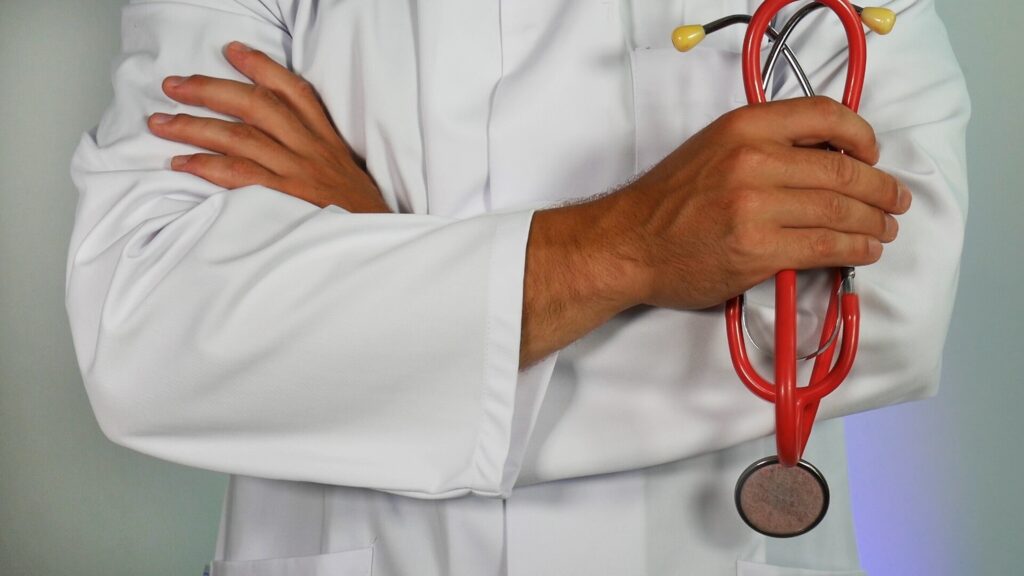On my first day of medical school, students were informed that the school purposefully switched the time of our classes from one week to the next so students would not be able to hold a job. They wanted us to focus on studying and indeed an intense amount of time to studying was required. There was a common adage in medical school that every $1 you spend now will cost you $3 later. This was because student loans were 8.5% and most medical students had high loans. Average medical school debt was $147,000 nationwide and on polling many of my classmates it was closer to $200,000 to $250,000 (including undergraduate debt). Looking at nationwide average today, medical school debt it is about $201,000 and average interest rate is 6.6% (numbers are estimates based on Google search in 2023).
If you look at average time to repay medical school loans it is 13 years after residency and residency is 3-7 years after medical school. You can defer loans during residency but they still accrue interest. Therefore, let’s look at an average of $201,000 with 6.6% interest and assuming not repaying during residency (we will take the average of 13 years).
Debt after 3 years residency is $244,878.56; monthly payment: $2,342.34; Total cost: $365,405.15
5 year residency $279,331.91; monthly payment: $2,671.90; total cost: $416,815.67
7 year residency $318,632.71; monthly payment: $3,047.82; total cost: $475,460.33
That’s a lot of money and shows the importance of living frugally.
I took the idea of $1 now, $3 later to heart and tried to live as cheaply as possible. While in school, I spent $8,000 to $10,000 per year for all my expenses outside of the cost of tuition. It probably helped some that myself and the other medical students were so busy studying that there was not a ton of free time to find things or activities to spend money on. I did not keep a budget or track my spending but it was easy to tell how much I spent each month and year because I had no income while in school so I could see the bank account amount going down.
Here are some of the expenses that I do remember at the time. My rent was $350 to $500 per month throughout my time in medical school. While some classmates lived in nicer apartments, but my roommate and I elected for the cheapest apartment near the school. This had some drawbacks such as loud neighbors at all hours of the night but at the time it was a sacrifice for a large savings. I also tried to stay under $100 -$150 dollars a month for food including eating out and drinks. I would buy in bulk for some foods to get savings and would look for sales. One time a bought a box of 80 hotdogs. Huge mistake. I had to come up with some creative recipes to get through the box including hotdog salad. I would not recommend it. My roommate and I even return cans that we collected at 5 cents a can for some extra cash. I lived across from the school and grocery store so did not have to drive a lot either. This saved a lot on gas costs. There are additional expenses that I did not reduce as much such as, my phone bill, internet bill, or car insurance. I was fortunate to still be on my parent’s medical insurance until I started residency which I am aware is not the case for everyone. I would still have fun when time allowed. After a test, a group of friends and I would often go out for dinner and drinks. I am not much of foodie and so I was happy with ordering cheap.
One of the biggest things I learned through this was, the more I worked on saving the easier it was, and I really did not feel like I was missing out on anything major. I have found free activities even while in medical school to do with friends that were often more fun than events that cost money. There were often events on the main street downtown Des Moines on the weekends that were fun and free like car shows, sculpture garden, tour of the state Capital, the art museum, and farmers’ market. We would go to the horse race tracks and once a year for camel and ostrich races with $1 bets and free entry. We did mountain biking, road biking, and downhill skiing at a local park. We would also go to the free night at the State Fair. Even now, I often look for free or cheap activities for the family. We tend to have more fun at these events, and you never feel pressure to make it worth the cost.
The biggest advantage to living frugally in medical school and residency, was that over time spending less becomes a habit and no longer has to be a conscious decision. My purpose of spending less is not for the hope of more money, happiness, and gratification down the road; I am genuinely happy and joyful spending less and expensive item or events often no longer appeal to me. I am living a wonderful life and do not need more and more money to sustain it. I think this mindset shift is possible for anyone that wants it. It may take time and work to get there at first, but it is absolutely worth it. Being aware of gratitude in the present helps enjoy each stage of life. The thought of material possessions or even needing to go to certain places/ trips or certain events no longer strongly appeals to me but spending time with those that are important to me and making memories with them has become superior.

